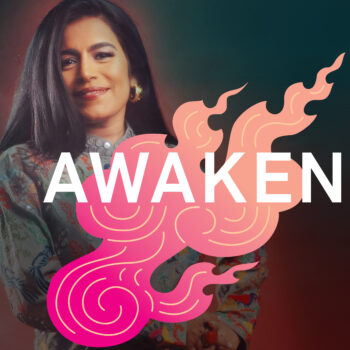
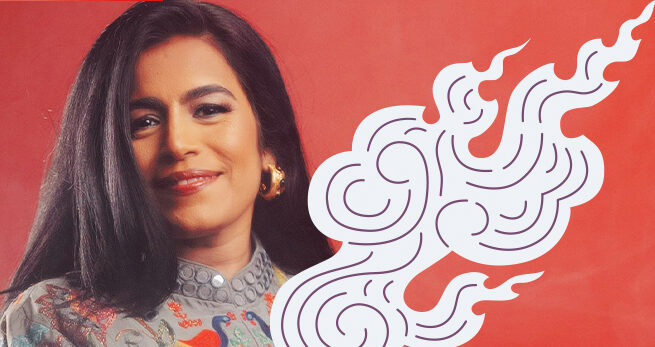
Everyone has spent time wondering about it, but no one can say for sure: What happens after we die? In the last episode of the season, all of the guests in the series consider this question and consider how believing or not believing in the afterlife impacts how they live. If death is simply a transition from one state to the next, then how do we imagine life after?
SPRING WASHAM:
We’re on the journey, life after life.
MICHELLE TEA:
It seems impossible that it would just be this. It just seems—like I go towards saying like, “Yeah, this could be all there is,” but then something stops me, because I’m just like, “That just seems impossible.”
SEBENE SELASSIE:
From those who seem to have experienced more, and know more, and my readings, it seems like we—we go on, and we take different forms.
LISA MILLER:
I certainly think there is continuity of consciousness after life, and that that consciousness then can take form in another life.
SEBENE SELASSIE:
And I trust from my direct experience that there’s more in reality and consciousness than just what we see here, feel, touch, taste, in this realm.
SPRING WASHAM:
I just think it’s a continuation of energy. I don’t think—from all—according to all the great masters, they just say it’s like a change of clothes.
FALU:
Welcome to AWAKEN, a podcast from the Rubin Museum of Art about the dynamic path to enlightenment and what it means to “wake up.” I am singer and songwriter Falu. At the Rubin, a museum dedicated to art from the Himalayas, we believe art can nurture awakening. This season, we delve into the notion of life after—those big transitional moments throughout our lives that propel us into the unknown. We’ve gathered artists, writers, scientists, poets, Buddhist teachers, and others to explore the key events and characteristics of a human life—from birth to death and everything in between—as well as grapple with the ultimate mystery: the afterlife.
Their stories offer insights on how to approach change with openness, even amid possible grief or joy, fear or excitement. And with art from the Rubin Museum as the connecting thread, we can make even better sense of those changes. Because art has the ability to wake us up to what is possible. Author and poet Michelle Tea.
MICHELLE TEA:
One thing that is sort of consoling is I do feel like either there is something, and that’s going to be very interesting—might be hard, sure, but I don’t believe in, like, hell or torment. I don’t believe it’s a nightmare, ya know. Or there isn’t, and we don’t know any better. So, it’s fine. You know what I mean? I feel like either way, we’re kind of okay? It’s sad, I guess, from here, but how much of that is ego? Like, why should it be sad?
FALU:
In this episode, Life After. Throughout this season, we have been looking at the concept that with each ending, there is a beginning. Everything has a life, after. And in this final episode, we consider what happens after this life. Regardless of your personal beliefs, you’ve probably contemplated this question before. Reflecting on the impermanence of our human lives and yearning to continue to exist is part of what makes us human. Now, we don’t know what happens after we die. Nobody knows. Doctors, philosophers, poets, artists, people of all ages and backgrounds, have spent time wondering but no one can say for sure. According to the highly respected Tibetan Buddhist meditation teacher and author Yongey Mingyur Rinpoche, death is simply a transition, and if there’s one thing certain in life, it’s transition. Here’s an example he shares:
YONGEY MINGYUR RINPOCHE:
Have a job, and then somehow that job is changed, or you want a change, or the company want you to change. There are so many things can happen. So when they change, then, we lost that job. That is—one thing’s dying, actually, but that change of that old job opens a new opportunity, actually, so there’s a rebirth. Then in between there, there’s a gap, so what we call bardo, bardo moment. So bardo meaning in-between or intermediate state.
Not just with in-between job; in between our relationship, in between our learning, and in between our thought, in between the emotion, something, we are changing, and what we call impermanence. And that also can go three lifetimes normally. So from past, life gone, and then there’s an intermediate moment, and then now we are reborn, this life, or—and even until we will die again, and we will be reborn again. So in the end, what I call death, is not the end. So death is not the really what we think is death. Death is reborn.
MARIE HOWE:
Nobody’s ever dead.
FALU:
Poet Marie Howe.
MARIE HOWE:
First, probably nobody’s ever dead. I mean, who knows what’s going on. But then, you know, we remember our loved ones just—we just—I think that’s why aging gets so much better, because there’s so many people inside us. We don’t have to just be ourselves anymore, I feel like. I do. I feel like so many of my friends are dead now, Really—impossible to live without friends. And now, I don’t have to live without them, ‘cause they’re with me. But it really is like—it feels like we just get peopled. If we’re lucky enough to keep going and carry them with us. We already know there’s so much we cannot even perceive that the insects perceive, and the whales hear, and the elephants hear, we can’t even know.
KAY TYE:
I certainly believe that there are lots of things that exist that we don’t have any evidence for or against.
FALU:
Neuroscientist Dr. Kay Tye.
KAY TYE:
And not having evidence of an existence in the afterlife doesn’t mean that it doesn’t exist. It’s just that maybe we don’t know what to measure or how to measure it, or maybe it’s not something that can be measured
Biological processes stop and you begin to decay, and your ability to integrate sensory information into a centralized location and have a mind that has a subjective ego is going to be lost. I think that you are going to continue to have an impact on the ecosystem around you. And even far away in time and space, the fact that any life that existed could have a massive impact on reverberating throughout the ecosystem surrounding it. So I think that when you die, the afterlife is going to look very different than the life as we know it. I think the ways in which it’s going to be different are almost inconceivable to us with the way that our brain forms our reality. But it is not impossible that there is another afterlife existence, and that it is just a very different experience than the one that we have when we are living.
SPRING WASHAM:
We’re always constantly dying to something. Dying to old programs, concepts.
FALU:
Meditation teacher and author Spring Washam.
SPRING WASHAM:
We grieve the part of ourself, that person in that context, in that land, ya know? And we have to let go of our attachment, we have to let go of fear, and we have to take a bold leap. And there’s sort of faith in that. There’s trust in that. And so I believe that we are always in a phase. If we’re on the spiritual path and we’re growing, as we lose more and more parts of ourself—I like to use that analogy, like cutting away parts, the deluded parts, the greedy parts, the hateful parts, right?—those energies are dying, and then what’s born is something more compassionate, more present.
And so I feel like for me, this is a real constant state of consciousness, death and rebirth.
YONGEY MINGYUR RINPOCHE:
What we call death is not really death. Death is the evolving. Death is rebirth, equal to—death is equal to alive. So—from Buddhist aspect—the fundamental quality of mind is unborn, so how you can die? So, death is just concept, normally. So therefore, the fundamental never dies.
FALU:
Neuroscientist Dr. Jill Bolte Taylor.
JILL BOLTE TAYLOR:
I’m really curious about how I’m gonna go. I’m really curious about what’s gonna get me. I’m really curious about how old I’m gonna be. I mean, I think about it daily, seriously. I don’t fear it.
I’m excited for it. Cause it’s gonna happen, right? And I’ve lived such a fantastic life, with such—you know, why wouldn’t I? If I’m going to live each moment that I have this form, with this level of excitement, why wouldn’t I be excited about, well, how’s it gonna end, you know? And actually one of the things I do with people is I take ‘em to the gutter. Because people get so caught up in the drama and the trauma and the pain of everything, it’s like—it’s like, take yourself, and envision yourself—you were just in a terrible car accident, and now you are—you were thrown out of the car, you’re lyin’ in the gutter, and your body feels like a ton of lead, and you can’t move, and you actually feel blood dripping out of you. You’re pouring out. You’re in the gutter. You’re at your death. This is it.
And, what do you think those moments will be like, as you release the fear of whatever was out there. You’re not thinking about the past, or you’re not thinking about the future. You’re suddenly here, in the present, in the experience of that moment of your own death. And to feel that sense of awe and gratitude that oh my god, I was alive, and this is that moment of transition—how beautiful, how beautiful. To me that’s just an absolutely beautiful moment.
YONGEY MINGYUR RINPOCHE:
When we die, all this mental imprints, all this perceptions, dissolve. Dissolve into our original state, the luminous mind. And in the bardo, big bardo, they are begin to manifest, wake up again. Not fully wake up yet. So then if we bring awareness that time, recognize that time, we can become fully enlightened, within few short period of time. So therefore what we call these bardo teachings are really important. They are what we call Hearing Liberation. So that’s the big bardo. If we recognize big bardo, we become fully enlightened. Similarly in our life, in between the moment, as I mentioned before, plasticity state. If we bring awareness there, if we recognize that, then we can grow, learn, transform, easily.
FALU:
We go through so many changes every moment, every day. Some we’re not aware of, like the changing of our cells, but some we just miss. And what some of our guests are describing is that awakened awareness, being present in that in between moment. Dr. Lisa Miller speaks of something similar.
LISA MILLER:
Awakened attention allows us to engage and perceive the deeper unity and force in and through life. It takes us out of our ruminations. It takes us out of quick or careless interpretations of life into a deep appreciation. Because every bit of life counts. Every bit of life is dynamic, and affected, and full of spirit. It all counts.
When awakened awareness is used and practiced, we literally strengthen the regions, thicken the cortex, across the regions of the awakened brain.
SPRING WASHAM:
And awakening out then just gives you another opportunity. It’s like, oh, then we’re spirit. We’re light. So, I can’t imagine trying to have all—without having experienced it, it’s all concepts, of course, but I feel a deep resonance with rebirth, and that we’ve all been here multiple times. And we’re back again! The school of life, you know, is in session again! And the more we learn, the more we don’t repeat, and the more we liberate. So, let’s see. I’m here for the journey. I’m curious.
FALU:
In each episode, we invited one of our guests to reflect on an artwork in the Rubin Museum’s collection. For rebirth, Spring Washam looked at A Folio from a Manuscript of the Liberation through Hearing in the Intermediate State, what is commonly known as the Tibetan Book of the Dead or Bardo Thodrol. Buddhists believe that we enter the bardo, the intermediate state, after we die and leave our body. In this state, some experience various visions and senses. The Bardo Thodrol guides practitioners in how to visualize and recognize these visions to liberate themselves from falling back into samsara, the endless cycle of birth, death, and rebirth. This is what Spring Washam saw in a folio illustrating some of these visions.
SPRING WASHAM:
What I see really is like the hero’s journey.
We’re facing ourselves. There’s a battle. And then we have to slay the dragon, and we have to garner the courage, and it’s our mythology, in different ways, you know? It’s so beautiful. And I’ll look even more closely. Yeah! We’re shooting an arrow. We’re dancing. We’re on fire. You know? And then we like—we’re transformed. It feels like we had a battle in the first one. We’re liberating something. Then we have the fire. Then we keep going. Then we’re biting the head of the snake, you know? This is real shamanic stuff, here. This is tantra. This is the path of fierce energy.
FALU:
This fierce energy is powerful. It may be our driving force. The thing that propels us forward. That energy can also be understood as one that simply transforms from one being to another, gets reborn, reincarnated. Artists and founders of the Chapel of Sacred Mirrors Allyson and Alex Grey believe we evolve into a new life form.
ALLYSON GREY:
I tend to think that there is consciousness that continues after we shed the container in which consciousness lives.
I really believe that. I think that some people achieve rainbow body, and they turn into light, and leave only their hair and teeth. But some, some actually go through a hiatus, a bardo period, where they, I don’t know, get oriented towards their non-physicality, and are able to reenter in another form.
ALEX GREY:
I firmly believe in a potential for reincarnation, and that somehow this incarnating essence skips like a rock over the pond to its next touchdown, incarnation, to be bounced back at some point to the universal mind lattice, where the spool is gathered around, and you kind of get an essence or a taste of the wisdom of multiple lifetimes over millennia, as part of the evolution of the planet, just a spirit stream, that has the luck of getting a gander at it.
FALU:
Ultimately, however, what we come back to is the mystery. We don’t know. What do you think happens after we die?
CHELLA MAN:
I believe everything and I believe nothing. I believe we’re reincarnated. I believe nothing happens.
FALU:
Artist, director, and author Chella Man.
CHELLA MAN:
And so, I feel like I don’t know what happens, but I don’t think it’s just darkness. I think there’s something, but I don’t know what it is.
KIESE LAYMON:
Can I just be honest with you? I could say some smart shit; like I—have no idea. I don’t know that there is an after-we-die. Like, I don’t—I don’t know that there’s an after death. You know what I’m sayin’? Like for the person who’s supposedly dying.
FALU:
Writer and professor Kiese Laymon
KIESE LAYMON:
But the real answer is I think that the world keeps movin’. And people keep grievin’ and mournin’. The world keeps movin’ and people keep grievin’ and mournin’. For the person who’s quote unquote “dead,” I—I don’t even know and I don’t even care. Like, I love that I don’t know. It’s like the thing that you’ll never know, until it happens. Right? Like that’s the one thing. Like, can’t nobody come back and tell you.
FALU:
It’s entirely true. Imagine if you really did know for sure what happens, or doesn’t happen, after you die? How would you live differently if one of life’s greatest mysteries was revealed? Perhaps the magic of being alive would be diminished. But one day all of this as we know it will end. And there may be more. And there may not be. We don’t know. Writer and podcaster Nigel Poor is the co-creator and co-host of Ear Hustle, an award winning podcast series out of San Quentin prison.
NIGEL POOR:
Growing up, I always had a strong faith, not that I was particularly religious but I really believed that there was an afterlife, and it gave me a lot of comfort. And it was probably pretty traditional in that I thought I’d get reunited with people. And then I used to hope that there was reincarnation, because I thought that would be fairer, since some people seem to have such charmed lives and a lot of people have really difficult lives.
But as I’ve gotten older, I’m really afraid that there’s nothing. That we just cease to be, and that the only thing we can do is, in our lives, is to have good intentions that will live on after us, and then someone else will share them, and that’s how we’ll live on. But I’m—I’m worried that this is it , and that we will be nothing forever after we leave this body. I’d love to be wrong. I’d really love to be wrong. But I’m guessing that’s what happens. But I do really believe that our intentions will live on, and that’s the most we can hope for, and that gives me comfort. But I also agree, like what does one little human like myself know about the greater complexities of the universe? You know?
KAY TYE:
Every action has an impact on the ecosystem that surrounds us. And that impact on the ecosystem is gonna reverberate through the ecosystem and be manifested in a number of ways that we might not have imagined. And so, your mark is left
FALU:
But as comforting as knowing might be, not knowing may be even more liberating. Because we can allow ourselves to imagine, we can find comfort in the great mystery of it all, the magic of it all. And we can remember that it’s not the big death that matters but it’s the daily rebirths, the way that our life may still persist in the memories of others, in an afterlife if you believe in one, or something else. The moment one thing ends and another begins, a thought, a feeling, a chapter of our lives. It’s what we do with those changes, the decisions we make, the mark we leave, that really matters, that may be the true life after. Writer and editor Haley Nahman.
HALEY NAHMAN:
I do think that we leave something behind in terms of our—our impact. And I don’t mean like in a legacy sense, like will or will not your name be remembered, but in the sense that like how we behave, and how we treat people, and how we move through the world, has a lasting impact. And I think it’s good to keep that in mind when we’re alive.
FALU:
Ultimately, that’s the only thing we know we have. Just this moment, just this breath. We are in a constant state of evolution, from when we emerge out of the womb, to when we stumble through learning, become entranced by our emotions, envision aspirations, grapple with morality, face conflict and, ultimately, leave this world as we know it. Throughout, moment by moment, we die and are reborn, we die and we’re reborn, and in each transition, we have a chance, a choice, a fleeting and potent in between where we can be present and awake.
Thank you for listening to AWAKEN. You just heard the voices of Alex and Allyson Grey, Marie Howe, Kiese Laymon, Chella Man, Dr. Lisa Miller, Yongey Mingyur Rinpoche, Haley Nahman, Nigel Poor, Sebene Selassie, Michelle Tea, Dr. Jill Bolte Taylor, Dr. Kay Tye, Spring Washam, and me, Falu. To see the artwork discussed in this episode, go to rubinmuseum.org/awakenpod.
You can continue the conversation by following us on Instagram @rubinmuseum. And if you’re enjoying the podcast, leave us a review wherever you listen to podcasts, and tell your friends.
AWAKEN Season 3 is an eight-part series from the Rubin Museum. Come visit us in New York City, or explore rubinmuseum.org to learn more about the Museum and about art, cultures, and ideas from the Himalayan region.
AWAKEN is produced by the Rubin Museum of Art with Jamie Lawyer, Sarah Zabrodski, Christina Watson, Gracie Marotta, and Tenzin Gelek in collaboration with SOUND MADE PUBLIC, including Tania Ketenjian, Sarah Conlisk, Philip Wood, Alessandro Santoro, and Jeremiah Moore.
Original music has been produced by Hannis Brown with additional music from Blue Dot Sessions.
AWAKEN Season 3 and the exhibition Death Is Not the End are supported by the E. Rhodes and Leona B. Carpenter Foundation, Ellen Bayard Weedon Foundation, Robert Lehman Foundation, and The Prospect Hill Foundation. The Rubin Museum’s programs are made possible by the New York State Council on the Arts with the support of the Office of Governor Kathy Hochul and the New York State Legislature. Death Is Not the End is supported in part by the National Endowment for the Arts. Thank you for listening.
AWAKEN Season 3 is hosted by singer and songwriter Falu. Guests featured in this episode include Visionary artists and founders of the Chapel of Sacred Mirrors Alex and Allyson Grey, poet Marie Howe, writer and professor Kiese Laymon, artist, director, and author Chella Man, professor, clinical psychologist, and scientist Dr. Lisa Miller, writer and editor Haley Nahman, artist and podcaster Nigel Poor, Tibetan Buddhist meditation teacher and author Yongey Mingyur Rinpoche, meditation teacher and writer Sebene Selassie, neuroscientist and author Dr. Jill Bolte Taylor, author and poet Michelle Tea, neuroscientist Dr. Kay Tye, and meditation teacher and author Spring Washam. Read more about these guests below.
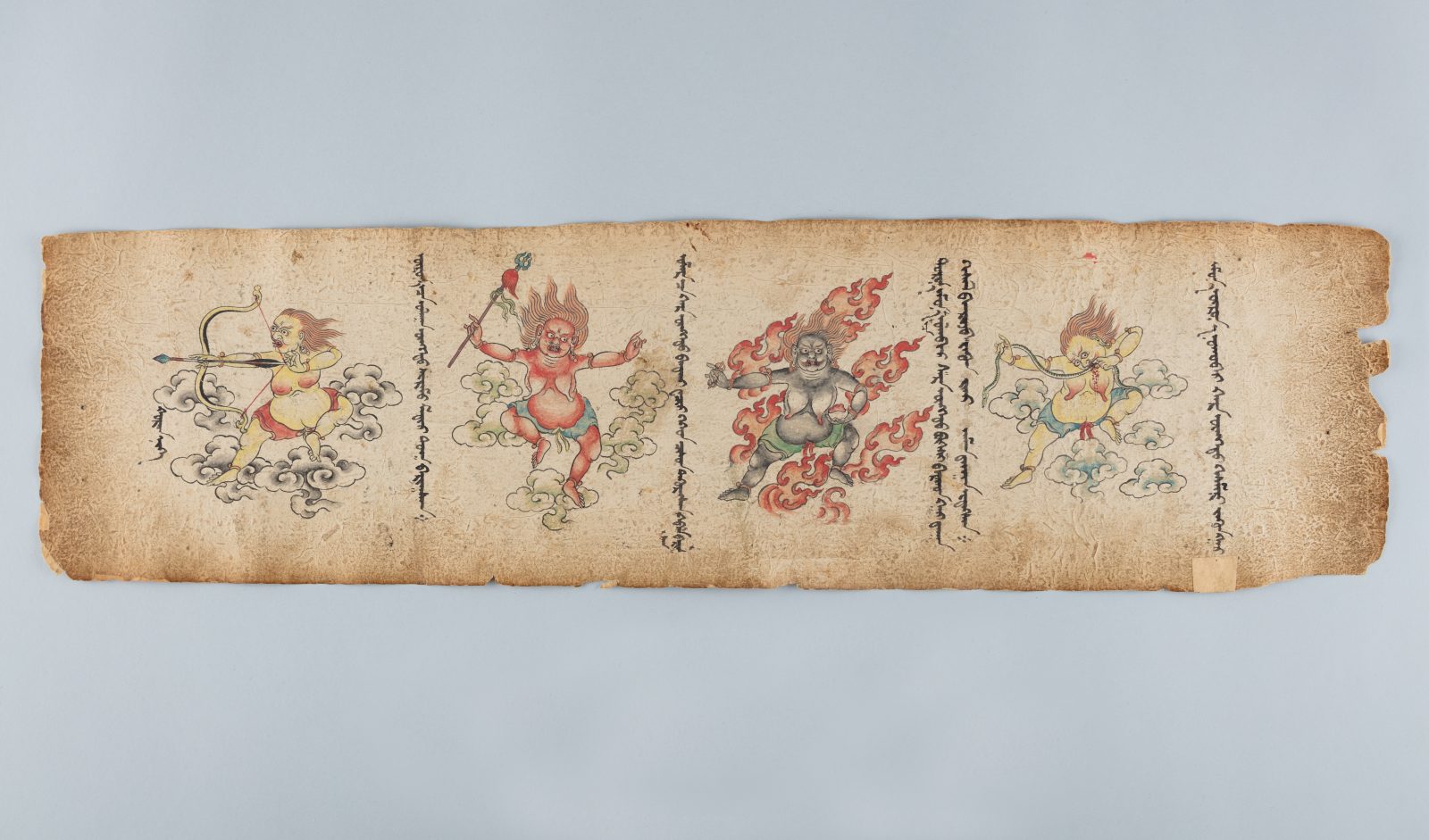
A Folio from a Manuscript of The Liberation Through Hearing in the Intermediate State (Bardo Thodrol); Mongolia; 19th Century; Pigments and ink on paper; Rubin Museum of Himalayan Art; C2004.37.3.21
Illuminated books became very popular in nineteenth-century Mongolia, and unlike many Buddhist texts that were reproduced using block prints, most of these books were hand written as is true of this text. This manuscript of the Tibetan Book of the Dead, a guide to navigating the intermediate state of consciousness between death and rebirth, or the bardo, features a vertical Uyghur-based Mongolian script that was instituted by order of Chinggis (Genghis) Khan (reigned 1206–1227) in the early thirteenth century.
These vividly painted illustrations are meant to prepare practitioners for the series of visions that are said to occur at death, which take the form of a series of peaceful and wrathful deities. Painted illustrations translate the written word into easily recognized and memorable forms and shapes, both peaceful and fearsome, that are meant to be visualized during the bardo practice in preparation for one’s own death or as part of the ritual at someone else’s death performed by a ritual specialist. In one folio, various female forms are depicted in active postures, each with a different animal head and body color. The colors relate to basic elements such as fire, air, and earth, and the animal heads are derived from Central Asian species of wild game along with some iconic Indian animals such as the elephant and boar. Learn more.
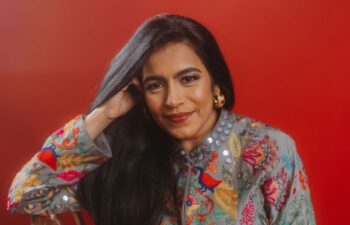
Falu is a Grammy award-winning, internationally recognized vocalist, composer, and educator known for her ability to seamlessly blend a signature modern inventive style with a formidable Indian classically shaped vocal talent. Falu’s career in the United States has led to a series of collaborations with Yo-Yo Ma, Wyclef Jean, Philip Glass, Ricky Martin, Blues Traveler, and A. R. Rahman, among others. She was appointed Carnegie Hall’s ambassador of Indian Music in 2006, and her shows at Zankel Hall have consistently sold out. Falu’s highlight performances include the 2022 GRAMMY Awards Premiere Ceremony and former President Obama and First Lady Michelle Obama’s White House State Dinner. During Diwali in 2022, the Mayor of New York City Eric Adams awarded her a citation for successfully representing immigrants in the city. Later that year she received a proclamation by the NYC Council “for fostering greater harmony around the world.”
Described by the New York Times as “East and West, ancient and modern” and named one of the twenty most influential global Indian women by the Economic Times, Falu continues to record and perform globally, and she serves as the Board of Governor for the Recording Academy’s New York Chapter.
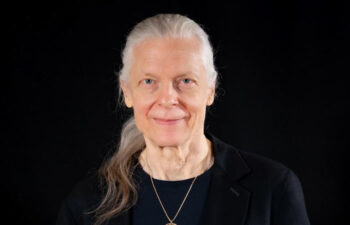
The Visionary paintings of Alex Grey articulate realms of psychedelic mystical experience, revealing interwoven energies of body and soul, love and spirit, that illuminate the anatomical core of each being. Alex’s artworks on the nature of life and consciousness have reached millions through his five books, including three monographs, as well as the exhibition and extensive reproduction of his artwork, social media, live-painting, and speaking appearances including a popular TED talk, plus his stage sets, animation, and Grammy award-winning album art for the rock band Tool. Alex and his creative and life partner, Allyson Grey, founded the Chapel of Sacred Mirrors (CoSM) as a heart center, sanctuary for Visionary Art, and sacred offering in the Hudson Valley town of Wappinger, New York.
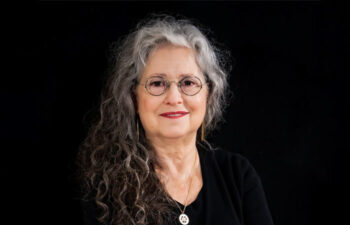
Allyson Grey is a painter and social sculptor. The subject of Allyson’s paintings is an essentialized world view, the artist’s interpretation of the realms of Chaos, Order, and Secret Writing. Chaos represents the material world; Order, the interconnected realm of energy and light; and Secret Writing, the untranslatable language of creative expression. Allyson has been the creative and life partner of artist Alex Grey since meeting in art school in 1975. She has long been an art educator, organization developer, editor, and muse to artists worldwide. She has an MFA from Tufts University. The Greys founded the CoSM (Chapel of Sacred Mirrors) as a heart center, sanctuary for Visionary Art, and sacred offering in the Hudson Valley town of Wappinger, New York.
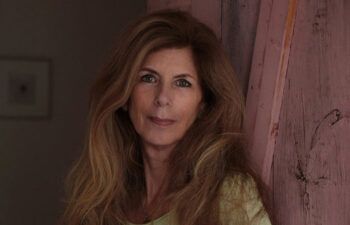
Marie Howe is the author of four volumes of poetry: Magdalene: Poems (2017), The Kingdom of Ordinary Time (2009), What the Living Do (1997), and The Good Thief (1988). She is also the co-editor of a book of essays, In the Company of My Solitude: American Writing from the AIDS Pandemic (1994). From 2012 to 2014, she served as the Poet Laureate of New York State. She is the poet in residence at the Cathedral Church of St. John the Divine and a chancellor of the Academy of American Poets.
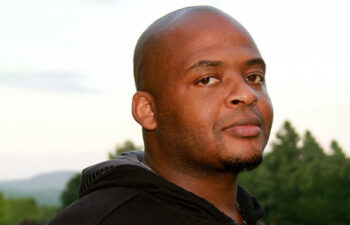
Born and raised in Jackson, Mississippi, Kiese Laymon is the Ottilie Schillig Professor in English and Creative Writing at the University of Mississippi and author of the novel Long Division, the memoir Heavy, and the essay collection How to Slowly Kill Yourself and Others in America. He was recently named a 2022 MacArthur Fellow.

Chella Man is an internationally acclaimed artist whose work explores the continuum of identity by deconstructing binaries within and beyond disability, gender, race, sexuality, and morality. His expansive identities as a Deaf, Genderqueer, Trans-Masculine, Jewish, and Chinese artist inform a unique perspective that cannot be limited to one medium. Most recently, he curated a New York Times–featured show highlighting 14 disabled artists under the title Pure Joy at 1969 Gallery. He is the author of Continuum (2021), director of the award-winning film The Beauty of Being Deaf (2021), executive producer of Trans in Trumpland (2021), fashion designer for his collection with Opening Ceremony (2019), actor in the role of Jericho in Titans of DC Universe (2019), and former columnist for Them, Condé Nast’s first LGBTQ+ publication (2018). Man has also worked with institutions such as the Brooklyn Museum, Powerhouse Museum, Performance Space New York, Leslie-Lohman Museum of Art, and Abrons Arts Center.
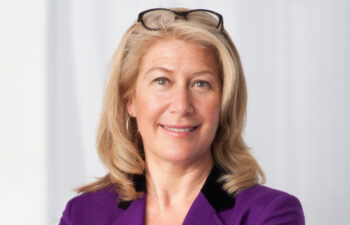
Dr. Lisa Miller is the New York Times bestselling author of The Spiritual Child and her new book, The Awakened Brain. Dr. Miller is a professor in the Clinical Psychology Program at Teachers College, Columbia University, where she founded the Spirituality Mind Body Institute, the first Ivy League graduate program and research institute in spirituality and psychology, and she has held over a decade of joint appointments in the Department of Psychiatry at Columbia University Medical School. Her innovative research has been published in more than 150 peer-reviewed articles in leading journals, including Cerebral Cortex, The American Journal of Psychiatry, and Journal of the American Academy of Child and Adolescent Psychiatry. Dr. Miller speaks extensively nationally and internationally on the science of spirituality in mental health and thriving.
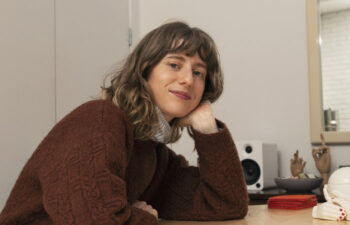
Haley Nahman is a Brooklyn-based writer and editor covering modern life and culture. She is especially interested in self-delusion, cognitive bias, mass media, and how our lives are shaped by all three. Nahman writes most regularly for her weekly newsletter, Maybe Baby, which was written up in the New Yorker, and her work has appeared in New York Magazine, The Guardian, and the New York Times.
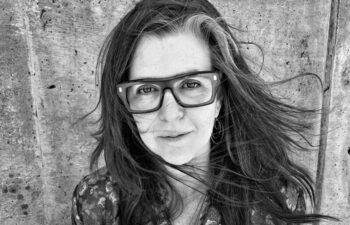
Nigel Poor is a visual artist whose work explores the various ways people make a mark and leave behind evidence of their existence. Her work has been exhibited nationally and internationally and can be found in various museum collections including SFMOMA, de Young Museum, and Corcoran Gallery of Art. She is also a professor of photography at California State University, Sacramento. In 2011 Poor got involved with San Quentin State Prison as a volunteer teacher for Mount Tamalpais College (formerly the Prison University Project). She is the co-creator and co-host of the Pulitzer Prize–nominated prison-based podcast Ear Hustle and the co-author of This Is Ear Hustle: Unflinching Stories of Everyday Prison Life.
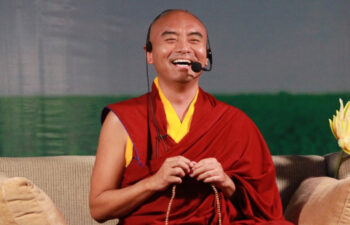
Yongey Mingyur Rinpoche is a recognized tulku of the Kagyu and Nyingma lineages of Tibetan Buddhism, a teacher, spiritual leader, and bestselling author. He possesses the rare ability to present the ancient wisdom of Tibet in a fresh, engaging manner. His profound yet accessible teachings and playful sense of humor have endeared him to students around the world. Rinpoche’s teachings weave together his own personal experiences with modern scientific research in relation to the practice of meditation. He has authored several books including two bestsellers: The Joy of Living: Unlocking the Secret and Science of Happiness, which has been translated into over 20 languages, and In Love with the World: A Monk’s Journey Through the Bardos of Living and Dying. His recent TED Talk is titled “How to Tap into Your Awareness—and Why Meditation Is Easier Than You Think.” Rinpoche teaches extensively around the world and oversees dharma centers, including three monasteries in Nepal, India, and Tibet, and the Tergar Institute in Kathmandu; Tergar meditation communities on six continents; numerous schools in Nepal; and social engagement projects related to health, hunger, hygiene, the environment, and women’s empowerment issues in the Himalayas.
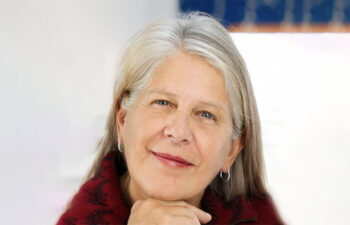
Dr. Jill Bolte Taylor is a Harvard-trained and published neuroscientist. At the age of 37 she experienced a severe stroke that wiped out the left hemisphere of her brain. She completely rebuilt her brain over the course of eight years. Her memoir, My Stroke of Insight, spent 63 weeks on the New York Times bestseller list, and her most recent book, Whole Brain Living, helps people find their own mental wellness. In 2008, Time magazine named her one of the 100 Most Influential People in the World, and she was the premier guest on Oprah’s Soul Series.
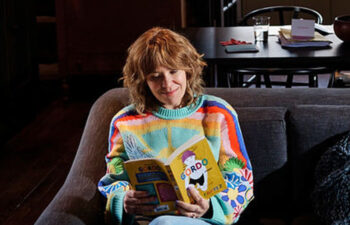
Michelle Tea is the author of countless books, including the Lambda Literary Award–winning Valencia and the PEN America award-winning Against Memoir. She has been awarded honors from The Rona Jaffe Foundation and the Guggenheim Foundation for her writing. As creator of Drag Queen Story Hour she has been honored with awards from the California Library Association and Logo Television. After curating imprints with City Lights Publisher and The Feminist Press, in 2023 Tea created DOPAMINE Books, an independent press.
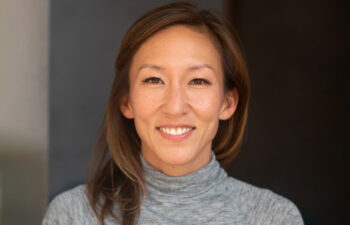
Dr. Kay Tye earned her bachelors from MIT, majoring in brain and cognitive sciences, and her PhD for thesis work with Patricia Janak at the University of California San Francisco, focusing on how the amygdala undergoes plasticity for reward learning. She did her postdoctoral training with Karl Deisseroth at Stanford University, where she pioneered the use of projection-specific optogenetic manipulations, a mainstay of circuit neuroscience, and used this approach to dissect anxiety circuits in the amygdala. She started her own lab at MIT in 2012, investigating the neural circuit mechanisms of emotional valence. In 2017 she won the NIH Director’s Pioneer Award to study social homeostasis, a conceptual framework she formalized in 2019. Dr. Tye moved her lab to the Salk Institute in 2019 and became Wylie Chair Professor of the Systems Neurobiology Laboratory. In 2021 she became a Howard Hughs Medical Investigator and continues to investigate the neural bases of emotional valence and social homeostasis on the circuit and systems level.

Spring Washam is a meditation teacher, author, and visionary leader based in Oakland. She is the author of A Fierce Heart: Finding Strength, Courage and Wisdom in Any Moment and her newest book, The Spirit of Harriet Tubman Awakening from the Underground. Washam is considered a pioneer in bringing mindfulness-based healing practices to diverse communities. She is one of the founding teachers at the East Bay Meditation Center. Washam received extensive training by Jack Kornfield, is a member of the teacher’s council at Spirit Rock Meditation Center in northern California, and has practiced and studied Buddhist philosophy in both the Theravada and Tibetan schools of Buddhism since 1999. In addition to being a teacher, she is a shamanic practitioner and has studied indigenous healing practices since 2008. She is the founder of Lotus Vine Journeys, an organization that blends indigenous healing practices with Buddhist wisdom in South America. Her writing and teachings have appeared in many online journals and publications such as Lion’s Roar, Tricycle, and Beliefnet. Washam has been a guest on many popular podcasts and radio shows. She currently travels and teaches meditation retreats, workshops and classes worldwide.
Get the latest news and stories from the Rubin, plus occasional information on how to support our work.